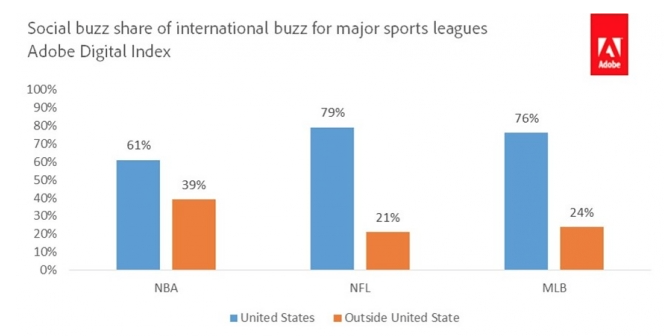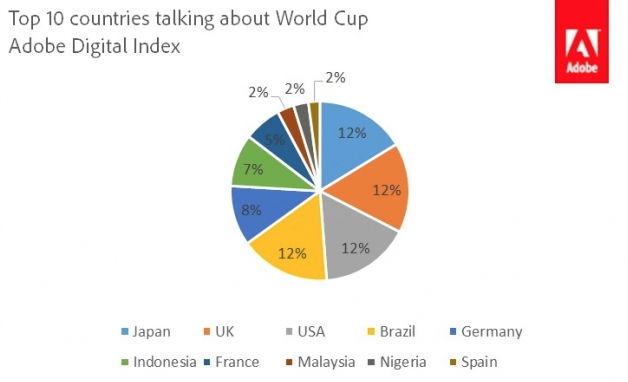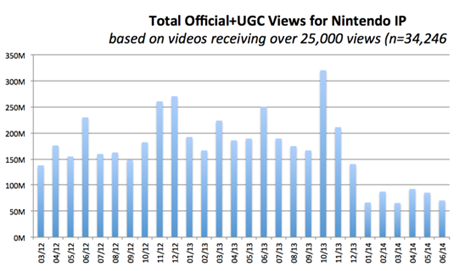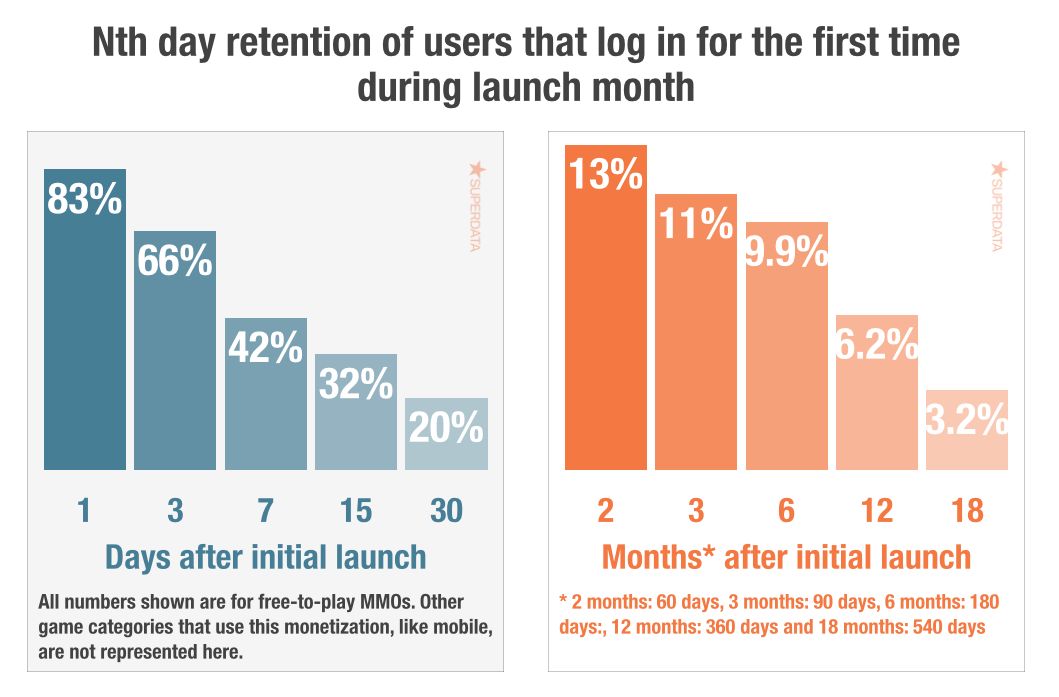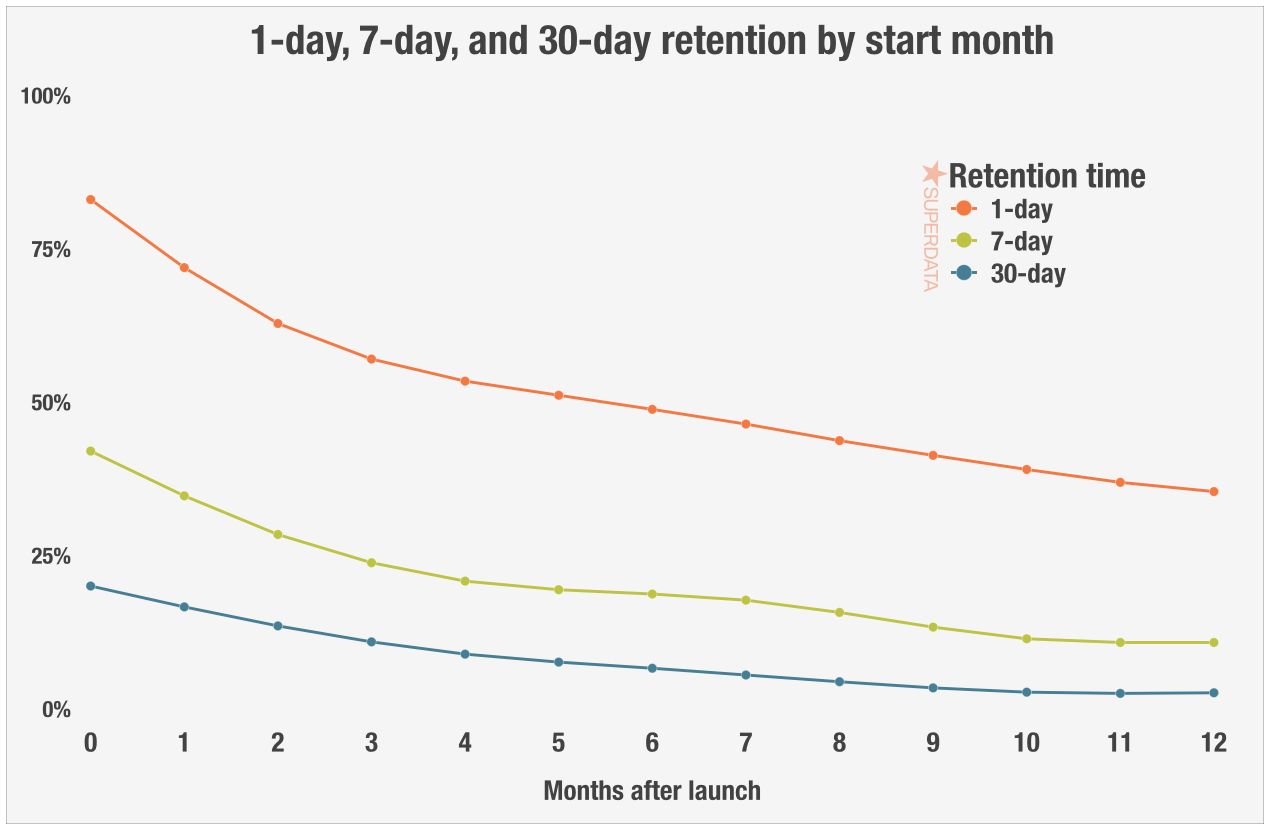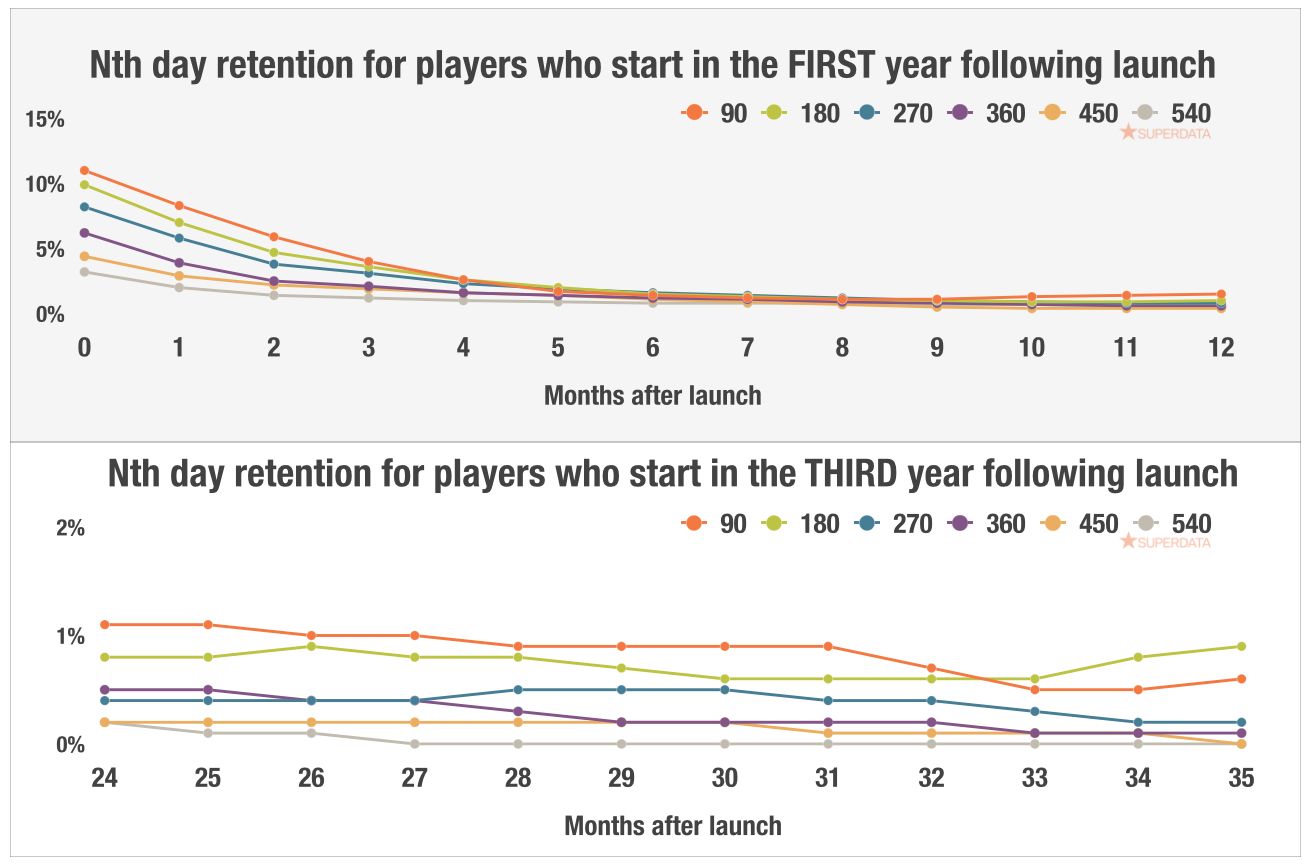On the 21st of January 2015, Microsoft revealed its ambitious plan to extend the reach of the Xbox Service beyond consoles, uniting previously disparate PC and console gamers. The Xbox app ensures that anyone running Windows 10 on a PC can enjoy the full Xbox live experience and stream Xbox One games from a console to a Windows 10 laptop, tablet or PC. Newzoo’s analysis of its consumer insights and global revenue data sizes the opportunity that Microsoft is after. Microsoft’s strategy potentially allows it to increase its share of the gaming market in two ways: by taking in a larger share of the wallet of its current user base and tapping into markets that have been out of reach until now.
Meanwhile, the two reasons why this is a smart first move for Microsoft are illustrated here:
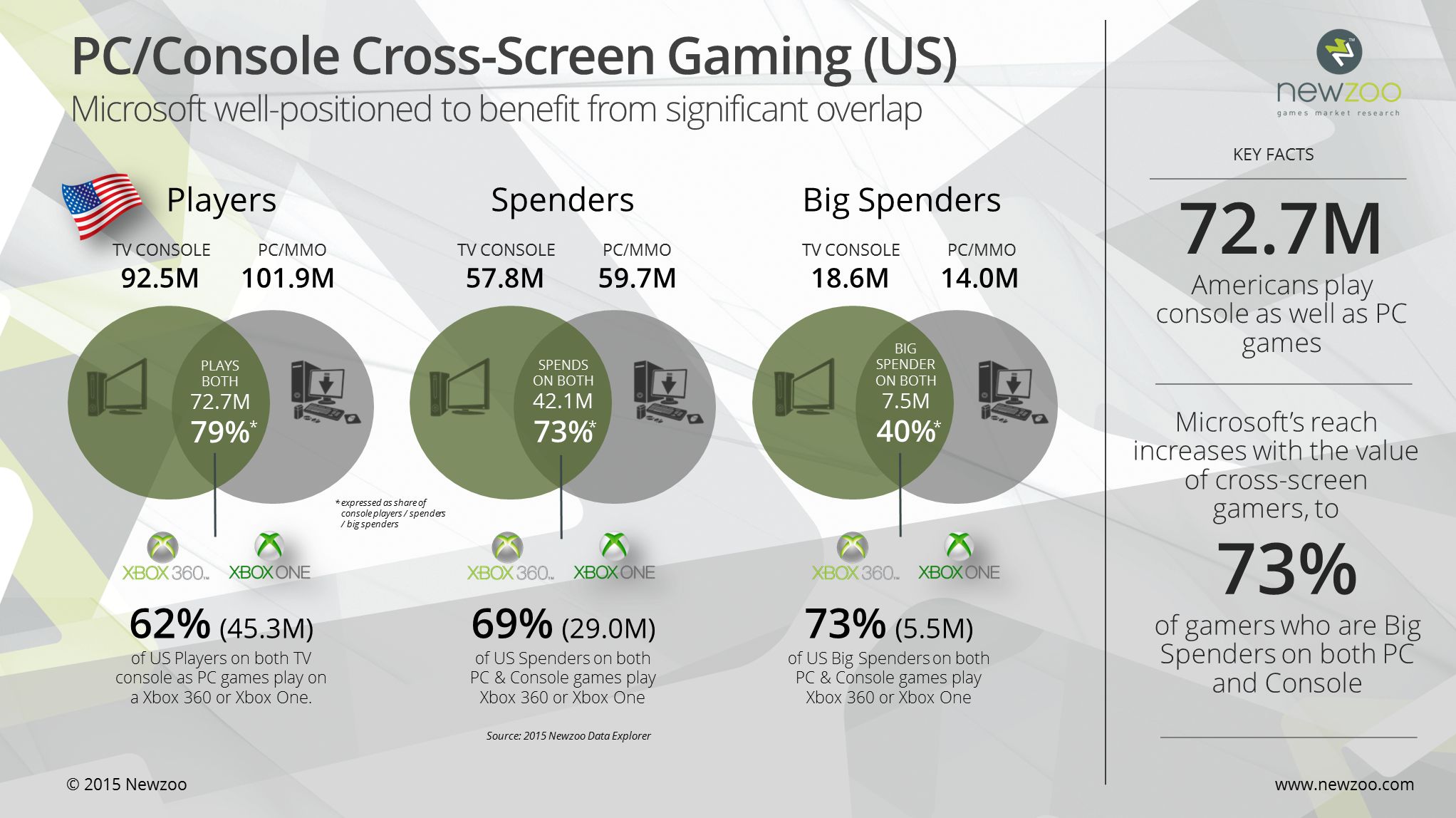
Half of Console Payers are Also Spending on PC
To understand how Microsoft is capitalizing on cross-platform gaming we only need look at the overlap between spenders on the PC and console using the Newzoo Data Explorer. In the US, 58 percent of those who play both console and PC/MMO games are also spending on both platforms — 42 million gamers. Zooming in on the more valuable payers, 10 percent of those playing on both platforms are also big spenders on both. This means that 7.5 million Americans are already spending higher value amounts on both console and PC/MMO games. If Microsoft can lure Xbox gamers that are already spending money on the PC to migrate this spending to the Xbox App, it can take more money from the same gamers’ wallets.
Microsoft has been laying the groundwork to capitalize on cross-platform gaming for some time with the increased publication of big brand titles across multiple platforms and cross-play functionality. Fable Legends, the upcoming sequel to the celebrated Xbox series, will be the first of many to launch on both Windows 10 and Xbox One and will allow for cross-play between PC and console. A statement published by Xbox’s wire service promised “the same game, in the same world, on the same map” for players on Windows 10 and Xbox One machines.
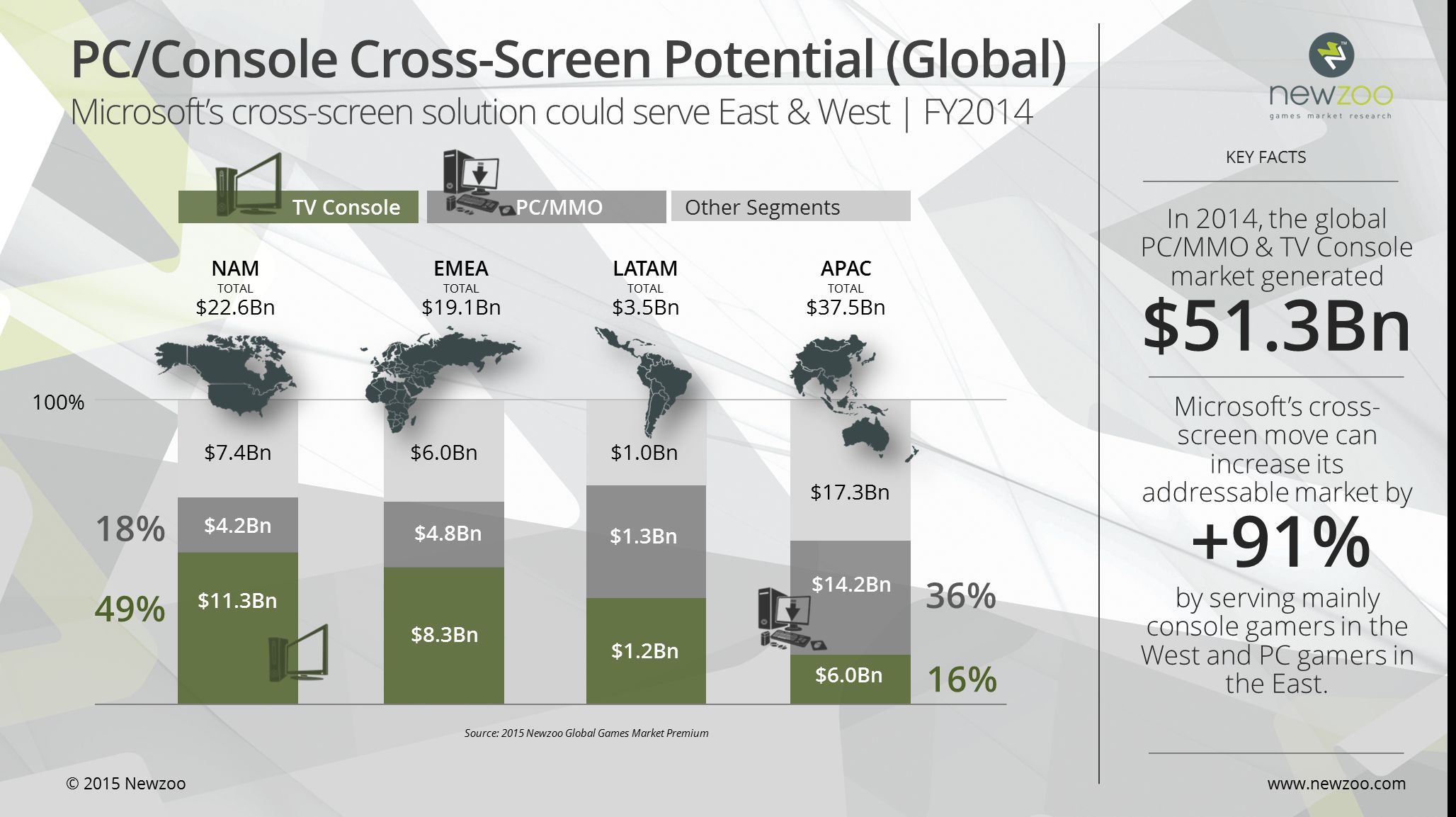
Microsoft can serve the East & West with one solution
In terms of money, our Global Games Market Premium service shows that global PC/MMO revenues exceeded $24 billion in 2014, while console revenues reached almost $27 billion. These revenues are not distributed evenly per region, with the East and West showing very different preferences per platform. In North America, console revenues exceeded $11 billion, far outweighing the PC/MMO revenues of $4 billion. Asia Pacific shows the opposite trend, with $14 billion in PC/MMO revenues, more than double the console revenues ($6 billion). This has rendered the East a much smaller and less lucrative market for Microsoft… until now.
Will Microsoft Take The Next Step
With this new cross-screen solution, Microsoft can potentially serve the large number of PC/MMO gamers in the East and its existing console customers in the West. The company has the potential to increase its addressable revenues by as much as +91 percent, supporting its ambition to become a truly global player in the games market.
This announcement to unify the efforts of its Xbox and Windows teams could almost double Microsoft’s addressable market and turn it into a truly global player. Still, to realistically achieve this goal one crucial step is missing: making the platform reversible, allowing PC games to be distributed through the Windows 10 Xbox app with or without the option to stream these to the TV screen. The current set-up caters most to those who already own an Xbox One, which remains an obstacle for conquering Asia. Upcoming announcements about Windows 10 could change this.
